How to Cultivate Independent Play in Your Child
It’s probably safe to assume that most parents would agree that allowing your child to park him/herself in front of the TV all day is a bad idea. So why is it that in 2009, the average 2-5 year old watched a screen (TV, DVD, iPad, computer) for an astounding 32 hours per week?!? (And 6-11 year olds weren’t that much better, at 28 hours per week.) That’s more than an entire day out of every week! As shocking as those statistics are, I think the reason behind them is simple. Parents are tired, and stretched too thin – an educational DVD or an iPhone app geared towards learning is a sure bet for Mom or Dad to have a few minutes to themselves – for cooking dinner, paying bills, or even just going to the bathroom alone!
Is wanting some free time to yourself during the day unreasonable? Certainly not! Everybody needs a break, even the theoretical super-mom. But don’t assume that popping in a video is the only way to get a few minutes of peace and quiet. Teaching your child to play independently will give you the break you need, WITHOUT the links to ADHD and childhood obesity. In fact, self-directed play “builds social and emotional health, confidence, creativity, self-discipline and problem solving skills” (quoted from this highly recommended article that actually inspired this post.) Try cramming all those benefits into an hour in front of the boob-tube!
Getting your child(ren) to play independently on their own does take more work on the front end than downloading the latest educational iPad app. But once you’ve got some routines established and creative tools in place, it makes parenting as a whole a LOT less demanding, even during the times when you and your child are together. The following are some ideas that have worked out well around our house…
ART CENTER: Art is a wonderful medium for inspiring creativity and imagination. Our Art Center is in the kitchen, where frequent spills and messes are generally pretty easy to clean up. C’s got his own little table as a workspace, and a couple of drawers in the corner to store his supplies. Although supplies vary, we always have play-dough, markers, crayons, watercolors, and different types of pads/papers on hand. It’s a great set-up for him to entertain himself while I cook, but I’m still right there if he needs fresh water for painting or wants me to admire his latest masterpiece. It also comes in handy after dinner when he’s ready to play but the adults aren’t done talking yet.
IMAGINATIVE TOYS: Your child’s room should be a creative, imaginative place! Toy choices and organization are both important here. Not all toys are created equal. Instead of a closet filled with electronic toys that somewhat “play themselves,” choose simpler toys that encourage exploration and discovery – blocks, trains, cars, musical instruments, books, and puzzles. Our newest addition is a little lap desk set up at the foot of C’s bed that he refers to as his office – it’s stocked with pencils, scissors, and all sorts of random papers that he hoards collects to practice those fine motor skills.
ORGANIZATION: Rather than tossing everything in a few giant catch-all toy bins right before company comes over, organize everything into smaller, sorted containers so that your child can easily see all of his/her options. This strategy will also go a long way in encouraging your child to put away their own toys, as cleaning up turns into a sorting game that is less overwhelming than giant buckets of toys with loose parts. Note: This is not to say that C’s room is always tidy, as I am not known for my housework skills. But it does mean that the clutter USUALLY stays under control, and that he always has plenty of open floor space to get creative.
RESTING TIME: This kind of goes along with the previous one, as it takes place in his room. Sometime just after 3 and a half or so, C gave up his once wondrous 2-3 hours naps more or less cold turkey. But while HE may not have needed a nap anymore, I still desperately needed him to take one! Our solution has been to implement a Resting Time. After our usual naptime routine (potty, books, and a brief snuggle), C lays in bed and “tries to go night-night” for about 10-15 minutes, then I come in and open the blinds and put on some music. We use Kira Willey’s “Dance for the Sun.” It’s an endearing combination of jazzy/folksy original kid-friendly tunes, with some bonus “yoga tracks.” During this time, C has free reign to play whatever he wants in his room. The whole album is an hour and ten minutes long, and when the music stops, Resting Time is over. C gets some time of (relatively) quiet play to rest and recharge before we go outside and run around again, and I get a much-needed chunk of time to write, answer emails, and maybe squeeze in an elliptical session. It took a few days before C was completely independent with it, but now he happily entertains himself the entire time, which is obvious from the singing and make-believe conversations I hear coming from his room!
CONSTRUCTION ZONE: Nothing gets my little boy engrossed in his own creative world than a bulldozer and some digging material. Whether it’s a pre-constructed sandbox or just an idle corner of dirt and leaves in your garden, an outdoor space for children to play in the dirt is essential for self-directed play (and also for your child’s developing immune system – check out this previous post.)
MUD KITCHEN: This is another recent addition at our house (with baby #2 coming in just a few weeks, we’re trying to beef up our self-directed play stations!) It has already provided countless hours of fun and creativity. I’m not even kidding, some of C’s favorite Christmas presents this year were the kitchen utensils he received in his stocking! Sometimes C is a master chef dreaming up mud-pie recipes to serve me while I sit in a pretend restaurant, other times he’s perfectly content playing alone while I rake leaves or mow the lawn. (Click here for step by step instructions of how we made our mud kitchen.)
CLASSIC OUTDOOR STANDBYS: The sky really is the limit when it comes to kids entertaining themselves in the backyard, but don’t forget about the classics that have worked in every generation – swingsets, treehouses, basketball goals, sprinklers…once those imaginative wheels start turning, even a stick and a pile of pebbles goes a long way! I could go on and on, but chances are I don’t need to because I’m sure you could rattle off about a dozen yourself .
I don’t want to come across as if I’m bashing TV. TV in and of itself (or DVD’s, iPads, electronic games, etc) is not the bad guy here. I am very appreciative of the educational components in many kid-centered programs and apps. But if we as a society continue to use screen time as an opportunistic baby-sitter, we’re going to continue to have problems with attention, focus, and obesity. The American Academy of Pediatrics currently recommends ZERO screen time for children under the age of 2, and no more than 1-2 hours per day of quality programming for kids older than 2. In our household, we strive to stay WELL below that limit – portable DVD’s are allowed on car rides that are over an hour, and a couple of times a month we’ll have a family night where we all sit down and watch something together.
I also don’t want to come across as if I’m encouraging parents to ignore their kids and make them play by themselves all day. By all means, delight in your children and engage with them as often as you can! They grow up far too quickly to take these precious years for granted! These ideas rather are intended to be used as an alternative for screen time during the inevitable situations where mom or dad need to get something done SANS kiddo, or simply just need a break.
All that being said, what are your family’s rules on TV/screen time? What routines and creative tools do you have in place that encourage imaginative, self-directed play?

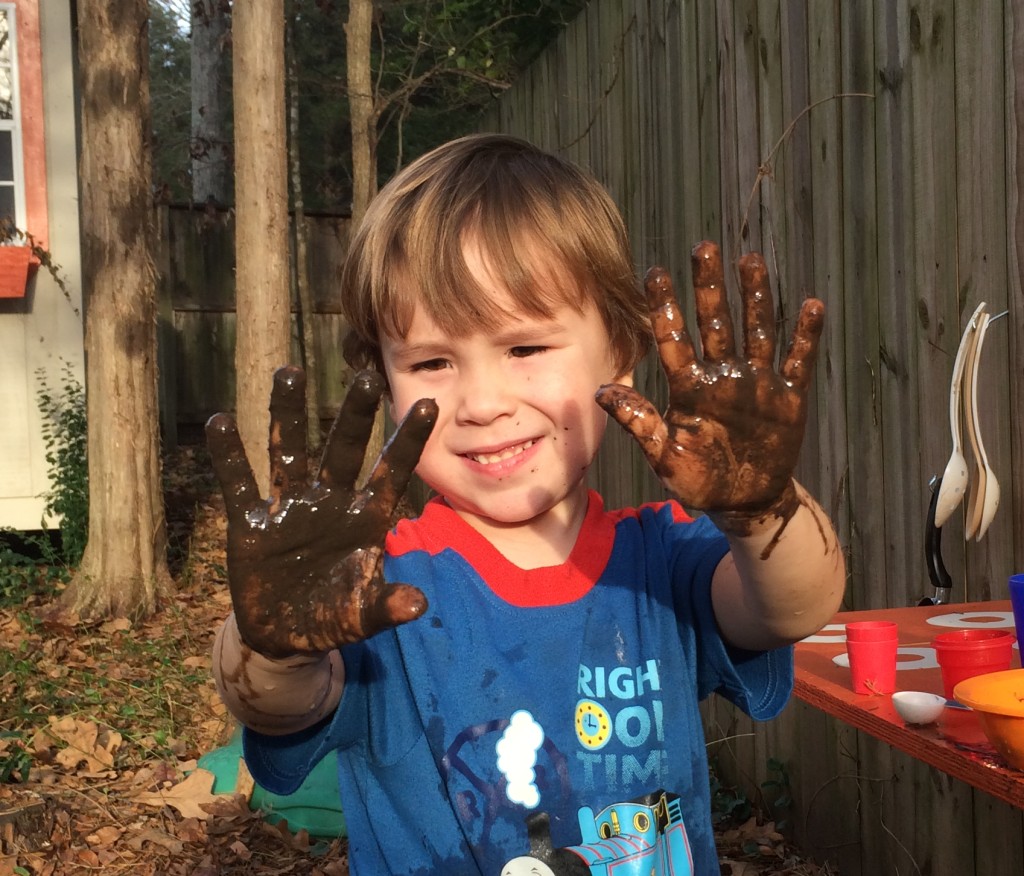
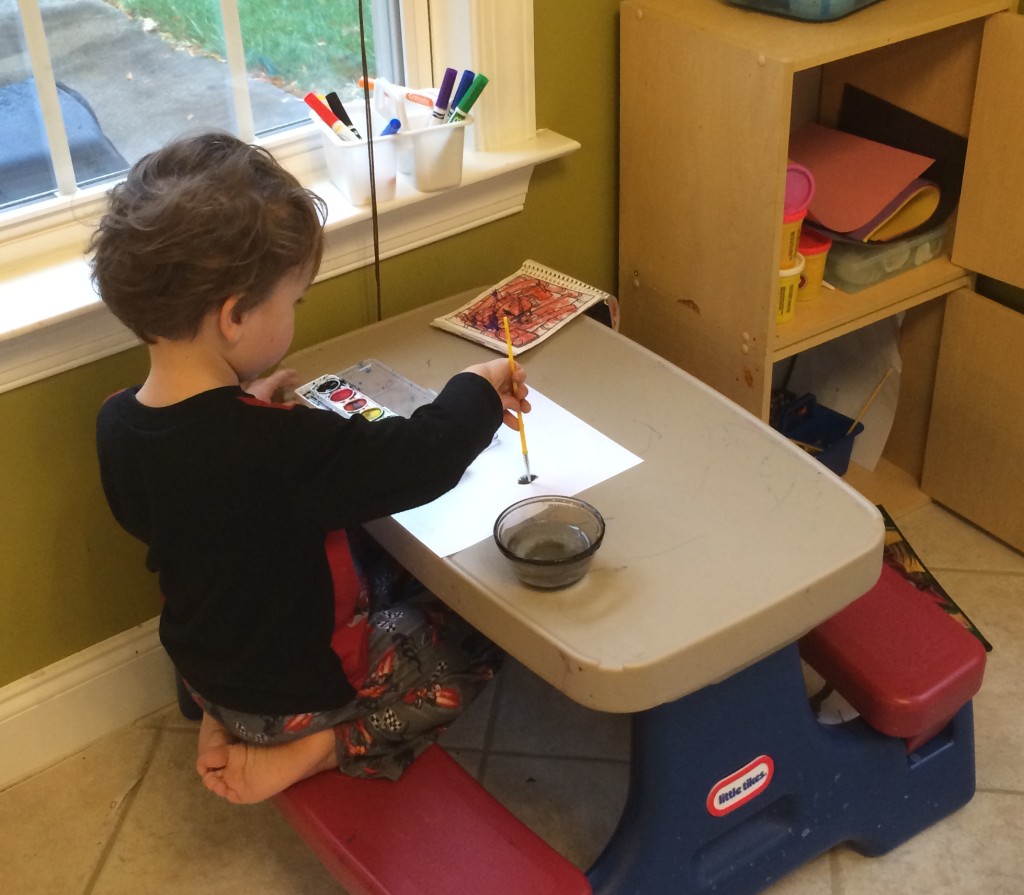
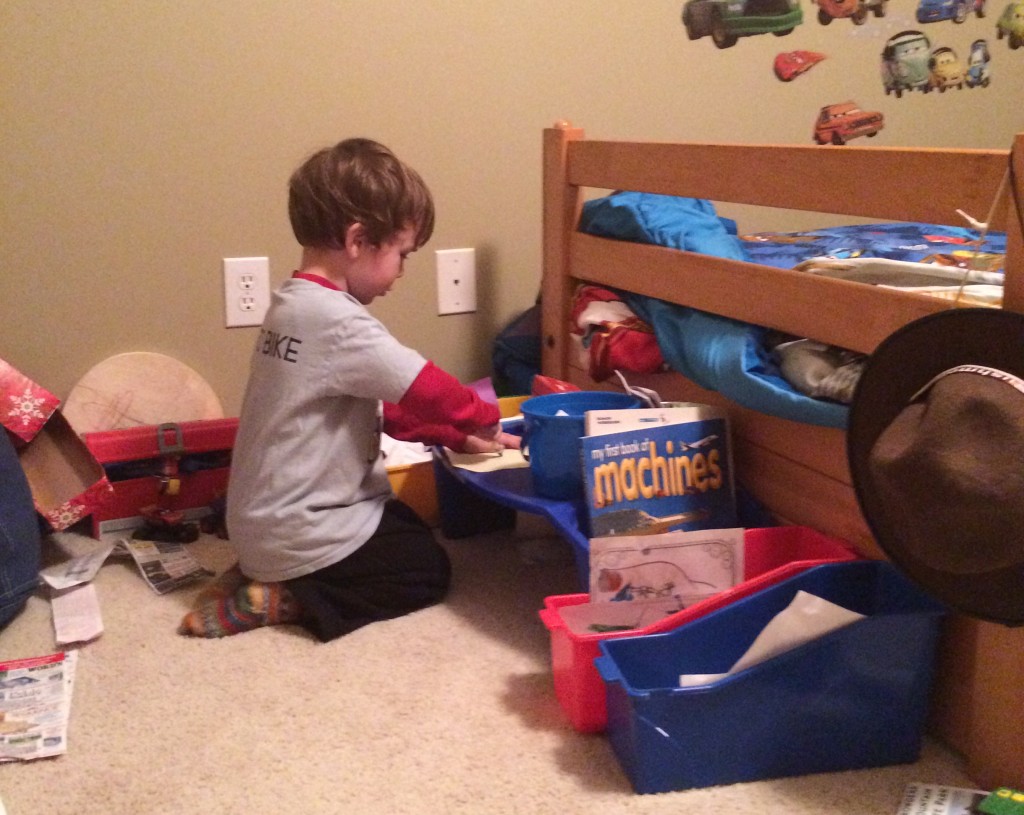
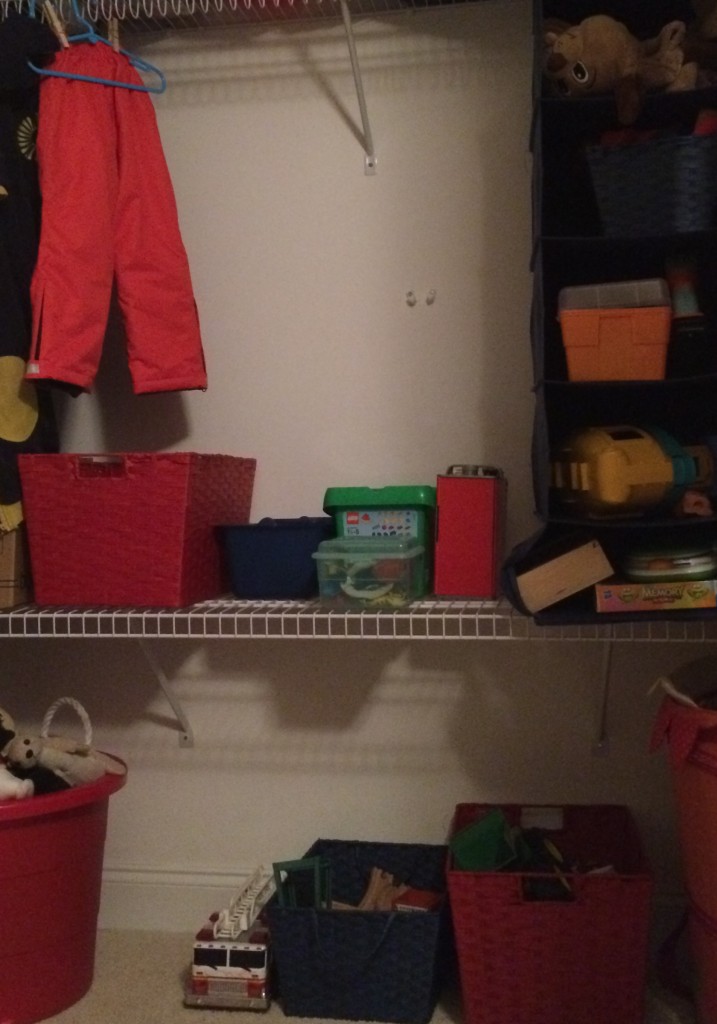
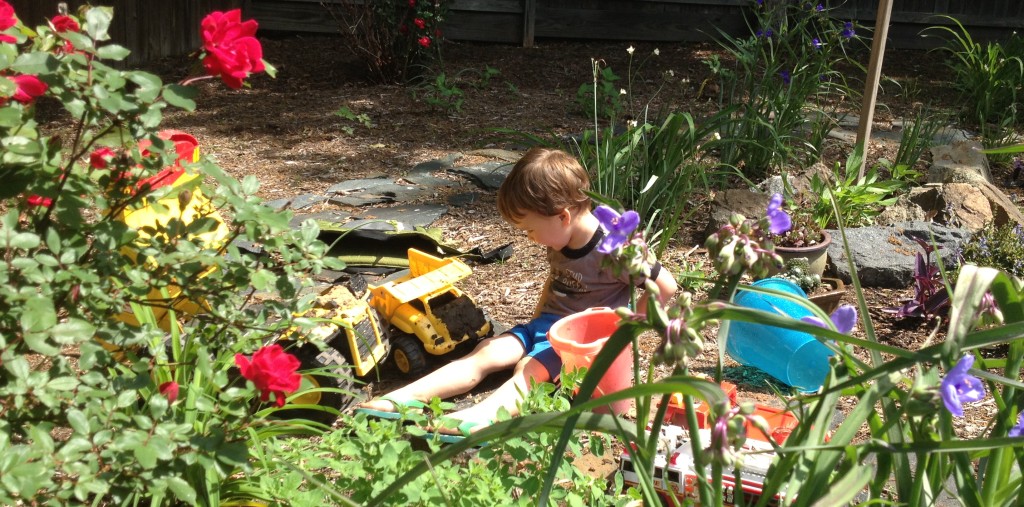
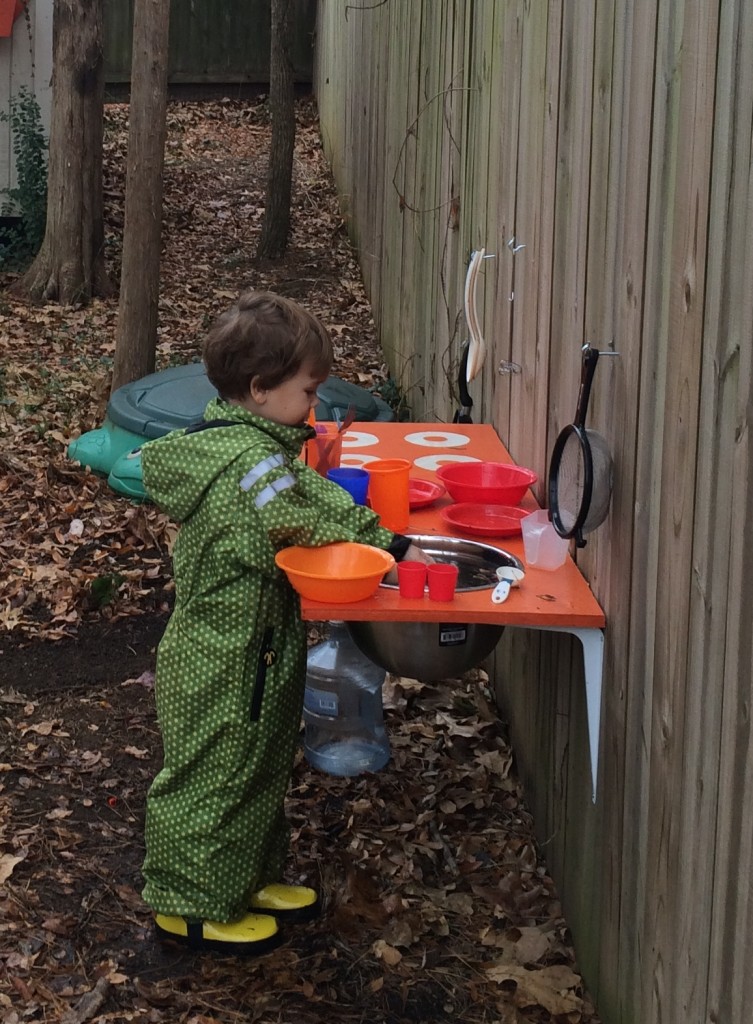
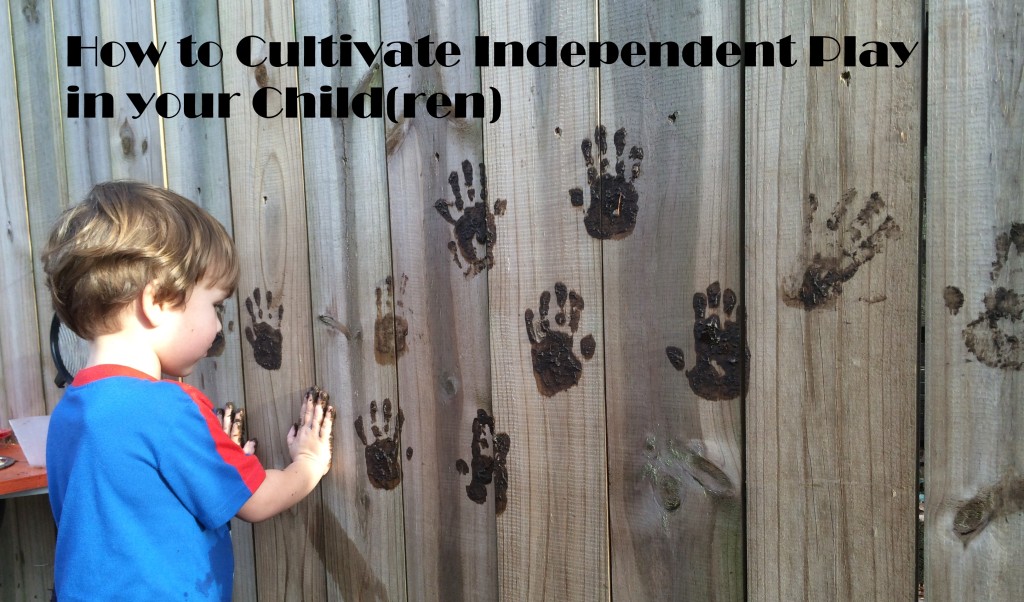

7 Responses to “How to Cultivate Independent Play in Your Child”
Great ideas! I especially love the mud kitchen!!! Thanks for the tips.
Glad you enjoyed it! Had we known the mud kitchen was so easy to make we’d have done it much sooner!
After baby #1 we realized we were slaves to the dvr, trying to watch saved shows before they disappeared. So we ditched cable. We get the basics, which include PBS, nbc, abc. Other than sports (which we’ve had to figure alternative plans for) we haven’t missed it. Especially since baby #2.
Instead, we play anything else. There are so many toys around, but I find the kids enjoy “cooking” with me in the kitchen, stirring plastic bowls of magnetic letters. In our previous house, we even dedicated a bottom kitchen drawer to empty (clean) food containers (spice jars, milk jugs, oatmeal canisters, etc) for more real play.
Now a favorite is a baby pool filled with plastic balls leftover from a birthday party. They both enjoy it too much to put it away!
Jill – Thanks for sharing your ideas. Cooking is great fun in our house as well, even though I certainly wouldn’t call myself a cook! I like the pool with plastic balls idea!!!
Wow! I really needed help on this. Our daughter loves to help which is great but still need our only child to develop imagination that comes with solo play. Now, with spring in Nebraska, it maybe a little easier.
This is so relevant. I think you have taken a much more structured approach than I have as a parent (which is admirable) – I just sort of ban the TV – my daughter is allowed 1 hour per night – but none on the weekends. Anyway – great post. Thanks for sharing!
I enjoyed reading this. I actually let my kids play independently with whatever games or activities they chose. This may be the reason why they are so independent especially my eldest daughter who is 9 years old. She does everything on her own while maintaining good grades in school.